
This lesson is about the various types of shelter animals live in and how they adapt to their environment.
- Subject:
- Environmental Science
- Material Type:
- Activity/Lab
- Homework/Assignment
- Author:
- evelina Jackson
- Date Added:
- 05/07/2022

This lesson is about the various types of shelter animals live in and how they adapt to their environment.
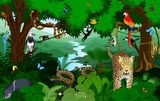
Este objeto de aprendizaje ofrece una descripción general de los diferentes tipos de hábitats que rodean al estudiante, incluyendo sus características distintivas, la flora y fauna que los habitan, y las adaptaciones únicas que han desarrollado las especies para sobrevivir en estos entornos. El objetivo principal de OVA es fomentar la comprensión de la biodiversidad y la importancia de la conservación de los hábitats naturales.

Este objeto de aprendizaje ofrece una descripción general de los diferentes tipos de hábitats que rodea al estudiante, incluyendo sus características distintivas, la flora y fauna que los habitan, y las adaptaciones únicas que han desarrollado las especies para sobrevivir en estos entornos. El objetivo principal del OVA es fomentar la comprensión de la biodiversidad y la importancia de la conservación de los hábitats naturales.

This resource is a video abstract of a research paper created by Research Square on behalf of its authors. It provides a synopsis that's easy to understand, and can be used to introduce the topics it covers to students, researchers, and the general public. The video's transcript is also provided in full, with a portion provided below for preview:
"Most current knowledge about gut microbiomes has been obtained from studies on mammals, while the microbiomes of fish, the most diverse group of vertebrates (~33,000 species), are less well understood. Specifically, the major influencing factors and unique features of fish gut microbiomes remain unclear. To bridge this knowledge gap, a recent study analyzed the gut contents of 227 fish representing 85 different freshwater fish (FWF) and saltwater fish (SWF) species. rRNA sequencing revealed that Proteobacteria and Firmicutes were the two most abundant phyla, indicating a different composition from the typical vertebrate microbiome, which is composed mainly of Firmicutes and Bacteroidetes. Habitat (freshwater versus saltwater) more strongly influenced the host microbiome than host taxonomy or trophic level and the microbiome taxonomic and functional profiles were better indicators of a fish’s habitat than of its taxonomy..."
The rest of the transcript, along with a link to the research itself, is available on the resource itself.
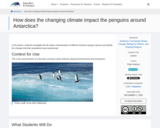
In this lesson, students investigate the life history characteristics of different Antarctic penguin species and identify the changes that their populations have experienced.
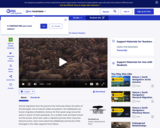
Learn about the wildebeest and locusts on the move in this video segment from Nature.

Students will explore the kelp forest ecosystem by conducting research and by writing imaginary narratives through an activity that integrates science and language arts.
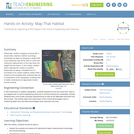
Historically, seafloor mapping occurred with a simple data collection method: soundings. Soundings are taken by dropping a weight with a pre-measured rope off the side of a boat and noting the measurement on the rope when the weight hits the bottom. In this activity, student teams replicate the creation of seafloor bathymetry by taking a simplified form of soundings of an unseen seafloor model inside a shoebox and translating their collected data into a visualization of the topography, enabling them to better understand and appreciate modern remote sensing.
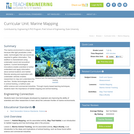
The marine environment is unique and because little light penetrates under water, technologies that use sound are required to gather information. The seafloor is characterized using underwater sound and acoustical systems. Current technological innovations enable scientists to further understand and apply information about animal locations and habitat. Remote sensing and exploration with underwater vehicles enables researchers to map and understand the sea floor. Similar technologies also aid in animal tracking, a method used within science and commercial industries. Through inquiry-based learning techniques, students learn the importance of habitat mapping and animal tracking.
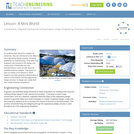
As students learn about the creation of biodomes, they are introduced to the steps of the engineering design process, including guidelines for brainstorming. Students learn how engineers are involved in the design and construction of biodomes and use brainstorming to come up with ideas for possible biodome designs. This lesson is part of a series of six lessons in which students use their growing understanding of various environments and the engineering design process, to design and create their own model biodome ecosystems.
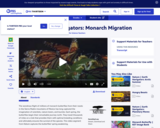
This video from Nature features the start of the monarch butterflyë_í__ northward trek.
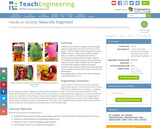
Students work in teams to design a tabletop supply organizer inspired by the natural home of an insect species. Their prototype stores the group’s classroom supplies (scissors, crayon boxes, pencils, and glue sticks). In addition to following measurement constraints that apply to their prototype, students must design their supply organizer with the idea that supplies must be easily retrievable and the organizer must be sturdy enough to withstand everyday classroom wear and tear. Students test their prototype in the classroom for a period of 5 days and evaluate its effectiveness.
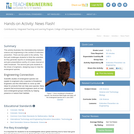
This activity illustrates the interrelationship between science and engineering in the context of extinction prevention. There are two parts to the activity. The first part challenges students to think like scientists as they generate reports on endangered species and give presentations worthy of a news channel or radio broadcast. The second part puts students in the shoes of engineers, designing ways to help the endangered species.
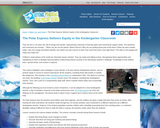
This free, online article, developed for elementary teachers, describes a Kindergarten polar science, standards aligned, unit centered on The Polar Express developing literacy, math, and science skills.

Students learn about population density within environments and ecosystems. They determine the density of a population and think about why population density and distribution information is useful to engineers for city planning and design as well as for resource allocation.
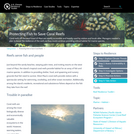
Coral reefs off the west coast of Maui are readily accessible and heavily used by visitors and locals alike. Managers needed a plan to boost the resilience of the reefs so they could continue providing critical habitat for marine species.
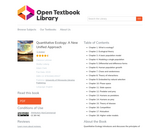
Quantitative Ecology introduces and discusses the principles of ecology from populations to ecosystems including human populations, disease, exotic organisms, habitat fragmentation, biodiversity and global dynamics. The book also reformulates and unifies ecological equations making them more accessible to the reader and easier to teach.
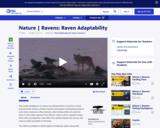
This video segment from Nature features ravens, the most intelligent birds in the crow family.
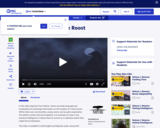
Learn how ravens benefit from sharing information and working together in this video segment from Nature.
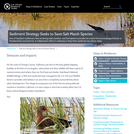
One of Southern Californias few remaining tidal marshesand the habitat it provides for marine life and endangered birdsis threatened by sea level rise. A collaborative effort is underway to help these wetlands stay above water.